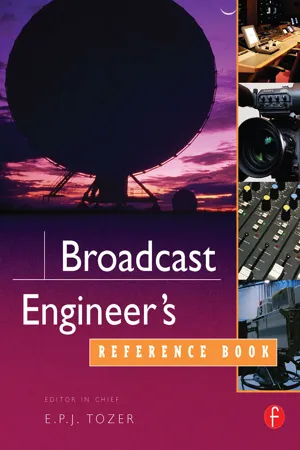![]()
Section 1
Supporting Technologies and Reference Material
Chapter 1.1 Quantities and Units
L W Turner
| 1.1.1 | Base Units |
| 1.1.2 | Supplementary Units |
| 1.1.3 | Temperature |
| 1.1.4 | Derived Units |
| 1.1.5 | Gravitational and Absolute Systems |
| 1.1.6 | Expressing Magnitudes of SI Units |
| 1.1.7 | Auxiliary Units |
| 1.1.8 | Universal Constants in SI Units |
| 1.1.9 | Metric to Imperial Conversion Factors |
| 1.1.10 | Symbols and Abbreviations |
| References |
Chapter 1.2 Engineering Mathematics, Formulas and Calculations
J Barron
| 1.2.1 | Mathematical Signs and Symbols |
| 1.2.2 | Trigonometric Formulas |
| 1.2.3 | Trigonometric Values |
| 1.2.4 | Approximations for Small Angles |
| 1.2.5 | Solution of Triangles |
| 1.2.6 | Spherical Triangle |
| 1.2.7 | Exponential Form |
| 1.2.8 | De Moivre’s Theorem |
| 1.2.9 | Euler’s Relation |
| 1.2.10 | Hyperbolic Functions |
| 1.2.11 | Complex Variable |
| 1.2.12 | Cauchy–Riemann Equations |
| 1.2.13 | Cauchy’s Theorem |
| 1.2.14 | Zeros, Poles and Residues |
| 1.2.15 | Some Standard Forms |
| 1.2.16 | Coordinate Systems |
| 1.2.17 | Transformation of Integrals |
| 1.2.18 | Laplace’s Equation |
| 1.2.19 | Solution of Equations |
| 1.2.20 | Method of Least Squares |
| 1.2.21 | Relation between Decibels, Current and Voltage Ratio, and Power Ratio |
| 1.2.22 | Calculus |
Chapter 1.3 Analogue and Digital Circuit Theory
P Sproxton
| 1.3.1 | Analogue Circuit Theory |
| 1.3.2 | Alternating Current Circuits |
| 1.3.3 | Digital Circuit Theory |
| 1.3.4 | Boolean Algebra |
| 1.3.5 | Karnaugh Maps |
Chapter 1.4 Information Theory and Error Correction
Garik Markarian
| 1.4.1 | Elements of Information Theory |
| 1.4.2 | Block Forward Error Correction Codes in Digital Broadcasting |
| 1.4.3 | Convolutional Codes |
| 1.4.4 | Turbo Codes |
| 1.4.5 | Practical Benefits of using Turbo Codes |
| References |
| Bibliography |
| Internet Resources |
Chapter 1.5 Coaxial Cable and Optical Fibres
R S Roberts
| 1.5.1 | Cable Transmission |
| 1.5.2 | Optical Fibre Transmission |
| 1.5.3 | Future Developments |
| Bibliography |
Chapter 1.6 TCP/IP Networking
E P J Tozer
| 1.6.1 | Introduction |
| 1.6.2 | OSI Seven-Layer Model |
| 1.6.3 | Introduction to TCP/IP over Ethernet |
| 1.6.4 | Ethernet |
| 1.6.5 | Internet Protocol |
| 1.6.6 | Useful Network Commands |
| References |
| Further Reading |
Chapter 1.7 SAN and NAS Technologies
Phil Horne
| 1.7.1 | Introduction |
| 1.7.2 | Storage System Architectures |
| 1.7.3 | Traditional Broadcast System |
| 1.7.4 | Networked Video Servers |
| 1.7.5 | Storage Area Networks |
| 1.7.6 | Enterprise Computer Networks |
| 1.7.7 | Using SAN and NAS Architectures |
Chapter 1.8 Telco Technologies
Phil Simpson
| 1.8.1 | Modems |
| 1.8.2 | Local Access |
| 1.8.3 | Digital Main Switching Units |
| 1.8.4 | Public Switched Telephone Network (PSTN) |
| 1.8.5 | Dealing with Echo |
| 1.8.6 | Standards and Numbering Plans |
| 1.8.7 | Integrated Services Digital Network (ISDN) |
| 1.8.8 | Broadband Integrated Services Digital Network (B-ISDN) |
| 1.8.9 | Asynchronous Transfer Mode (ATM) |
| 1.8.10 | Pleisochronous Digital Hierarchy (PDH) |
| 1.8.11 | Synchronous Digital Hierarchy (SDH) |
| 1.8.12 | Asymmetric Digital Subscriber Lines (ADSLs) |
| 1.8.13 | Very-High-Bit-Rate Asymmetrical Digital Subscriber Line (VDSL) |
| 1.8.14 | Universal Mobile Telecommunications Service (UMTS) |
| 1.8.15 | Dense Wave Division Multiplexing (DWDM) |
| 1.8.16 | Mobile Communications |
| 1.8.17 | Cellular Communications |
| 1.8.18 | Bluetooth |
| 1.8.19 | Telco Networks |
| 1.8.20 | Network Access |
| 1.8.21 | Other Services |
| References |
Chapter 1.9 Colour Displays and Colorimetry
R G Hunt
| 1.9.1 | Types of Colour Display |
| 1.9.2 | Colorimetric Principles |
| 1.9.3 | Chromaticities of Display Phosphors |
| References |
| Bibliography |
![]()
L W Turner FIEE
Consultant Engineer
1.1 Quantities and Units
The International System of Units (SI) is the modern form of the metric system agreed at an international conference in 1960. It has been adopted by the International Standards Organisation (ISO) and the International Electrotechnical Commission (IEC) and its use is recommended wherever the metric system is applied. It is now being adopted throughout most of the world and is likely to remain the primary world system of units of measurement for a very long time. The indications are that SI units will supersede the units of existing metric systems and all systems based on Imperial units.
SI units and the rules for their application are contained in ISO Resolution R1000 (1969, updated 1973) and an informatory document SI-LE Système International d′ Unite´s, published by the Bureau International des Poids et Mesures (BIPM). An abridged version of the former is given in British Standards Institution (BSI) publication PD 5686 The Use of SI Units (1969, updated 1973) and BS 3763 International System (SI) Units; BSI (1964) incorporates information from the BIPM document.
The adoption of SI presents less of a problem to the electronics engineer and the electrical engineer than to those concerned with other engineering disciplines as all the practical electrical units were long ago incorporated in the metre-kilogram-second (MKS) unit system and these remain unaffected in SI.
The SI was developed from the metric system as a fully coherent set of units for science, technology and engineering. A coherent system has the property that corresponding equations bet...
